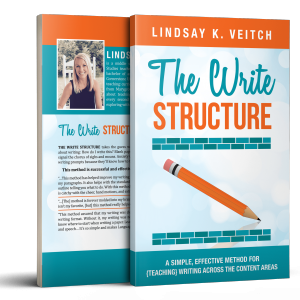Note from Dave: This article is written by our colleague, the excellent Lindsay Veitch.
The text message read something this:
Hey Linds. I am writing an essay for Psych 201 and I’m wondering if you could review my intro and make sure I’ve written a fully developed essay?
It was my sister-in-law, Taylor, a high school senior who’s dual-enrolled at community college and working day and night to achieve her goals. Of course I replied with a YES! But first, I needed to know what she was tasked with.
Her assignment was:
- To read a five-page long, single-spaced, medically jargoned article on Electroshock Therapy
- To write a “fully developed essay in response to the article”
- Due Monday
That’s it. Did you just have a flashback to freshman year of college? Are you nauseous? If so, I sincerely apologize.
Next, I reviewed Taylor’s work. I was proud as punch when I read her essay. I quickly found her thesis. Her subtopics were clearly stated. Her body paragraphs matched the subtopics and each was supported with evidence from the article. She expertly used her own logic to explain the key points. It was, as she had been directed to create, a fully developed essay.
As both a high school senior and first year college student, Taylor is an interesting case study. She is quickly approaching one finish line while simultaneously starting another race. Days in the safe and helpful environment of her public school are coming to an end. But for now, she still has dozens of teachers who are readily available, approachable, and helpful. Lunch hour check-ins, before school chats, and sustained relationships provide her assistance. For years, her learning has been supported with rubrics, outlines, and plenty of guidance. And yet Taylor also finds herself in a new world. The world of college — with far less guidance, independence galore, and of course, the all-necessary self-motivation.
Taylor, as a student, is the sum of her education so far. Right now, she finds herself seconds away from crossing the stage, snatching that diploma, and descending into the “real world.” And with her she will take hundreds of moments, a good many strategies, and a foundation of important skills acquired over the past 13 years of her education.
Colleagues, Taylor, as well as every other high school senior about to cross the finish line, embodies our collective efforts to teach, mentor, instruct, and motivate.
Back to that vague assignment from Psych 201: write a “fully developed essay in response to the article.” Taylor had no other instruction. And, I suppose you should know that Psych 201 is an online class. Students like my sister-in-law have to figure out how to develop an essay without any provided instructional tools. All of this, without even another human present to guide or explain.
Oh, and there’s one other thing I failed to mention. I noticed something very significant when reviewing Taylor’s essay. On the desktop of her screen, strategically placed, was a digital sticky note. On it she had typed a reminder for herself. It said: Identify It, Prove It, Bring It Back Around. Fortunately, Taylor has a writing structure, The Write Structure, to live and write by.
Taylor will not just make it through Psych 201 and every other college course she will write an essay for, she’ll excel. As a writer, Taylor can focus on content (what she’s read and learned and what she’ll write about it) instead of fretting about how to format her thoughts, logic, and ideas. When writers have an organizational model embedded in their memory, they can thoroughly develop their evidence and logic in a clear and orderly way.
As we prepare our students for the finish line this spring, let’s remember a few things. When we see them glide across the stage or waltz out of our classrooms for the final time, we are actually watching them enter the future. For these young people, graduation or grade advancement is really another beginning. It’s their chance to apply and try out all that we taught them. Do they have what they need to succeed at the next level? It’s our job as teachers to make sure we did all that we could.
 Giving students an effective writing format (that’s easy to remember) does take intention and effort. For years now, I’ve seen The Write Structure transcend grade levels, content areas, and writing tasks. You can read more about it here and here. Also, now included with the purchase of the ebook is an essay writing template. You can purchase a copy of The Write Structure: A Simple and Effective Method for {Teaching} Writing Across the Content Areas here.
Giving students an effective writing format (that’s easy to remember) does take intention and effort. For years now, I’ve seen The Write Structure transcend grade levels, content areas, and writing tasks. You can read more about it here and here. Also, now included with the purchase of the ebook is an essay writing template. You can purchase a copy of The Write Structure: A Simple and Effective Method for {Teaching} Writing Across the Content Areas here.
Leave a Reply